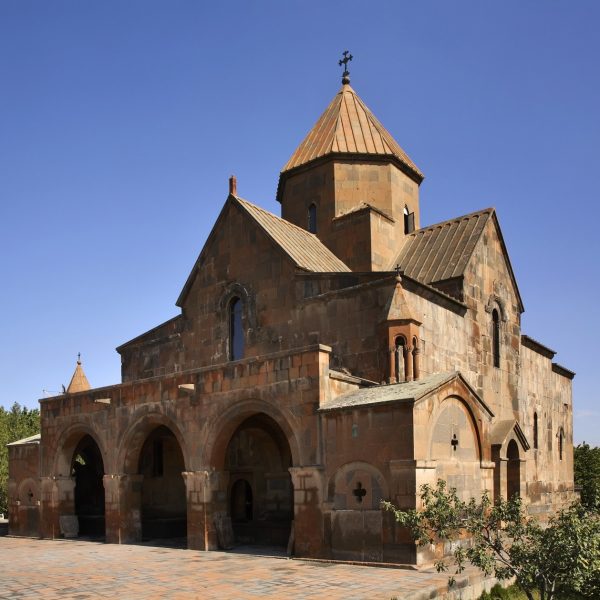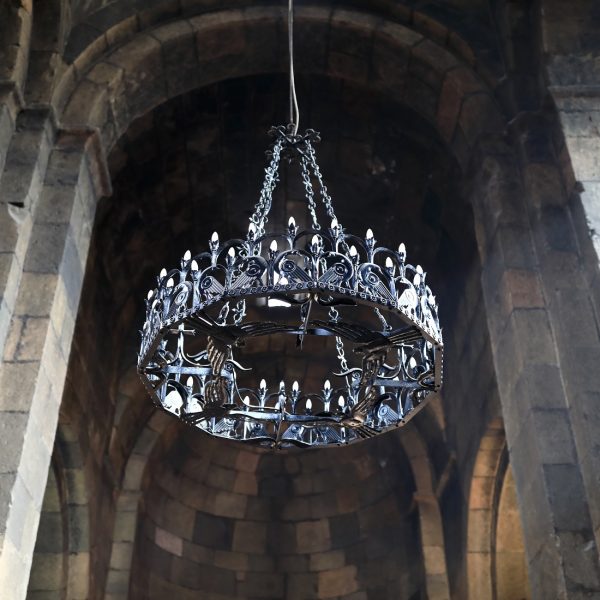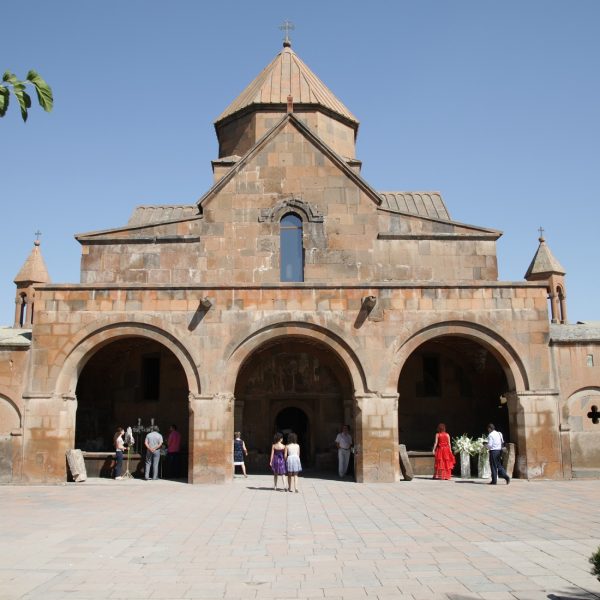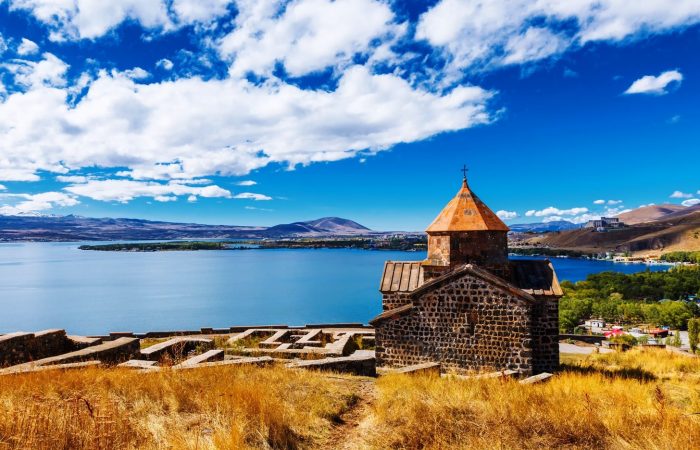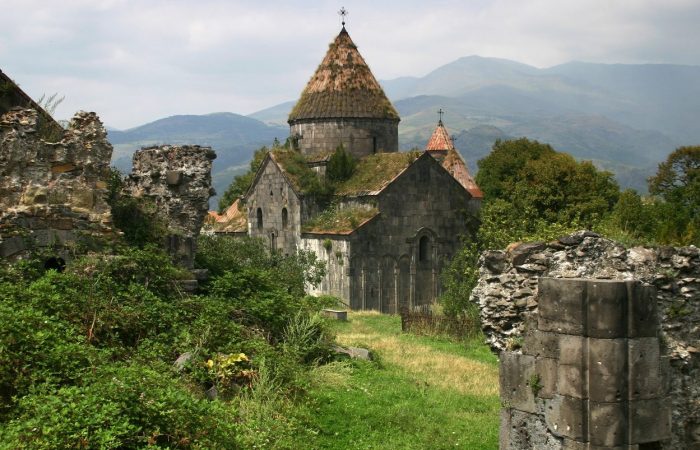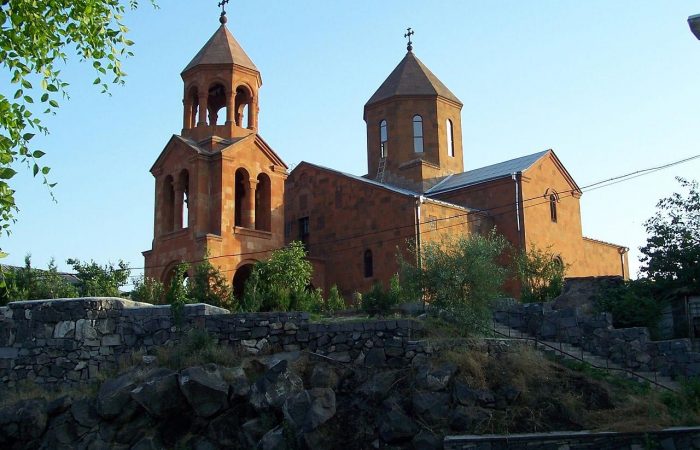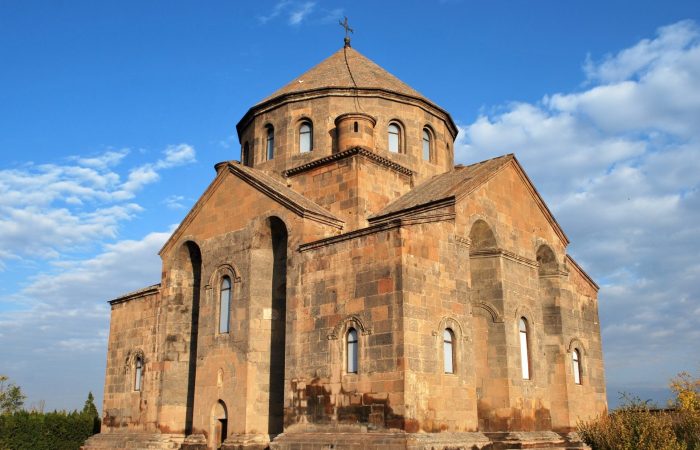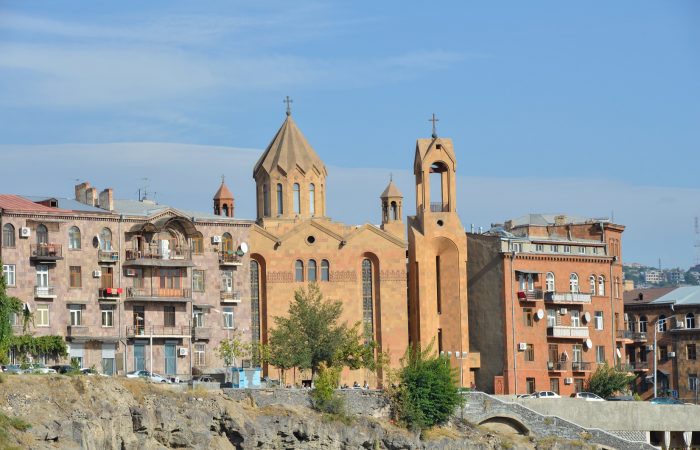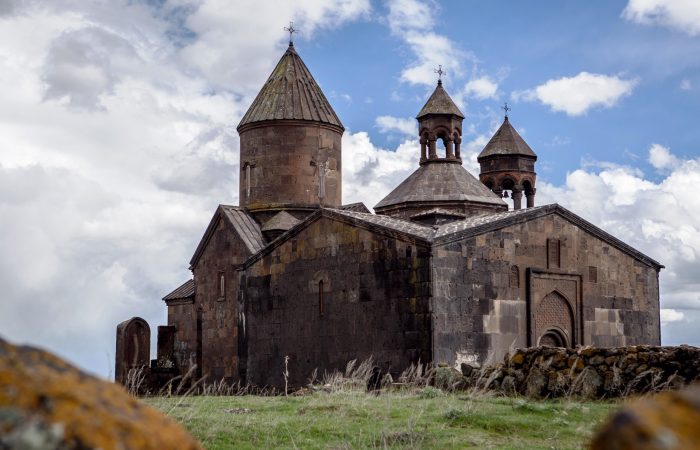Saint Gayane Church: General
According to tenth century Armenian historian and Catholicos Hovhannes Draskhanakertsi, the Church of Saint Gayane was built within 630-641 by Catholicos Yezr. The church is believed to be built in the place where upon the order of Armenian King Tiridates III Abbess Gayane was tortured and martyred. Prior to the church there used to be a chapel on the grave of Saint Gayane.
Who was Saint Gayane?
According to Agathangelos (the name means “bearer of good news”), Roman emperor Diocletian wanted to marry Christian virgin Hripsime. Hripsime refused, and to escape his persecutions together with other virgins and Abbess Gayane she came to Armenia. But that didn’t make the Emperor give up; he sent a letter to King Tiridates III asking him to find and martyr the virgins and send Hripsime back to him. Considering how beautiful Hripsime was, it’s not strange that the Armenian King was also captured by her beauty, and he himself wanted to make her his wife, which Hripsime refused. Enraged by that Tirdates ordered to isolate the virgins in various places and martyr them. Tiridates III is said to later fall in love with Gayane too.
The legend has it that the Church of Saint Gayane was built in the place where she was martyred. Upon the decision of Armenian Church Gayane was later listed as a saint.
Saint Gayane Church: Architecture
Saint Gayane Church belongs to the domed basilica type of churches. The inner space is divided into three naves. On both sides of the main sanctuary there are the cruciform vaulted annexes.
Saint Gayane Church is one of the brightest samples of Armenian architecture in which three-nave basilica and the central domed church are combined. This type of architecture later became rather widespread in Armenia. The central dome lies on four tall columns. It should be noted that Saint Gayane Church both reflects upon the past Armenian architecture and leaves a bright mark upon the future of Armenian architecture. As a bearer of past Armenian architecture, it is very similar to the 5th century Temple of Tekor (The Temple of Saint Sargis or Tekor is the first Armenian domed church; it is located in Kars). At the same time it had its influence on the future of Armenian architecture and its spirit is felt on the magnificent Mother Cathedral of Ani, which was built by architect Tiridates in 989-1010.
The church also includes frescoes, which can be seen on the interior walls and above the door. Interestingly, inside the church, particularly on the interior walls, mainly the frescoes of clergymen are carved. The frescoes of saints are carved above the main door.
The Church of Saint Gayane was included in UNESCO World Heritage List in 2000.
Saint Gayane Church: Gavit
The gavit of Saint Gayane church was added by Catholicos Eghiazar Ayntapetsi/Hromklayetsi (1681-1691), who is also remembered for having built various churches as well as renovating and reconstructing Saint Hripsime and Gayane churches. To the right of the western door there is a carved inscription in which the Catholicos mentions the renovation works he carried out in the church. According to the inscription, the gavit was built in 1688 with two apses on two sides and the names of Petros (Peter) and Poghos (Paul) apostles on them. The two apses bearing the names of the apostles are pulled forward from the church’s southern and northern facades.
The hall of the gavit represents a simple structure and comes with three arched openings facing on the western side.
Saint Gayane Church: Renovations
The walls and roof of Saint Gayane Church were completely renovated in 1652 (note that in the same year other Armenian churches like Sanahin were also renovated and reconstructed). The hall was built in 1683.
Summing up the church of Saint Gayane is very popular with Armenians. There is something mysterious about the church because it seems to call you. It’s the church where most loving couples choose to have their weddings, and therefore it’s always full of people. So no matter on which day of the week you choose to visit the church, you can always be sure to be part of a wedding ceremony performed there, which will add more meaning and excitement to your visit.

